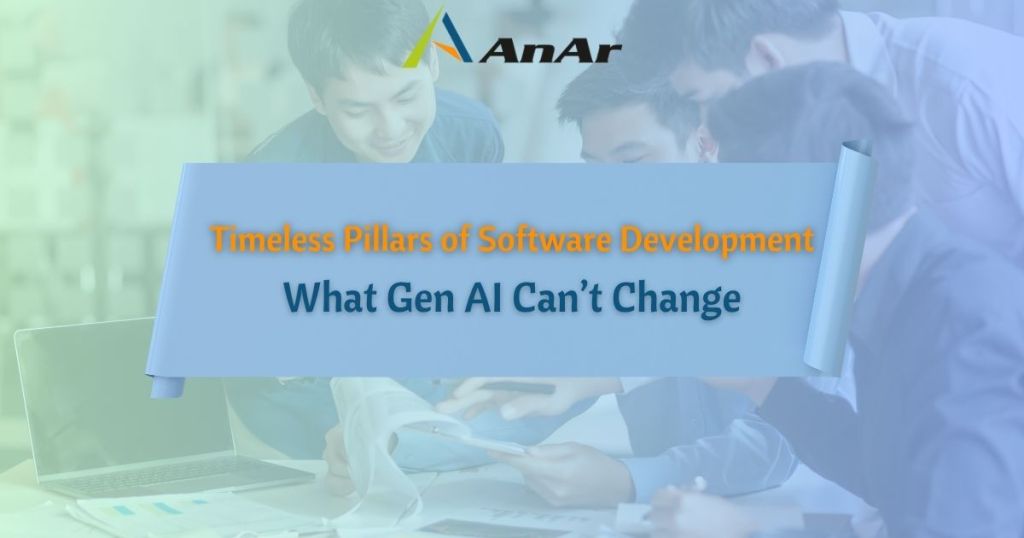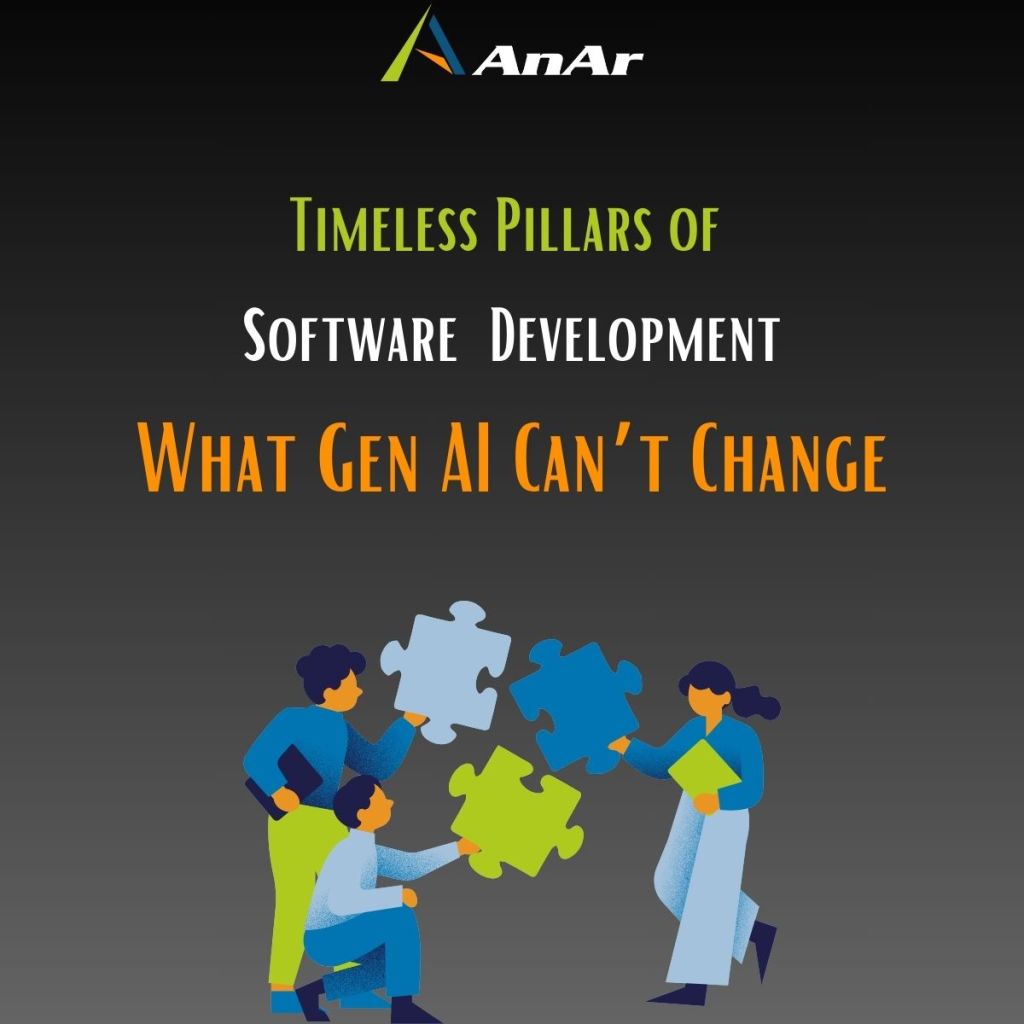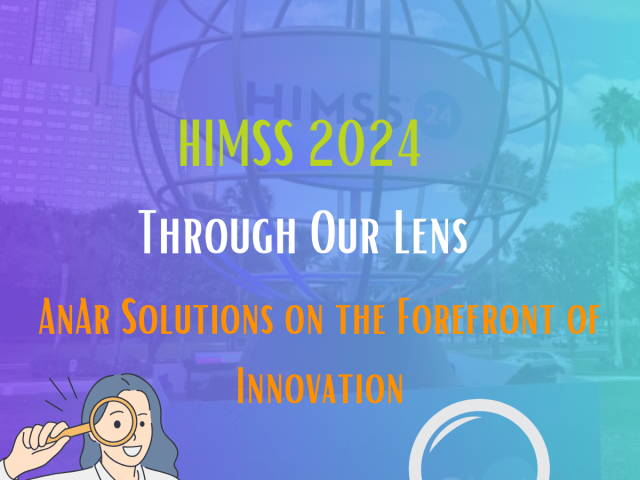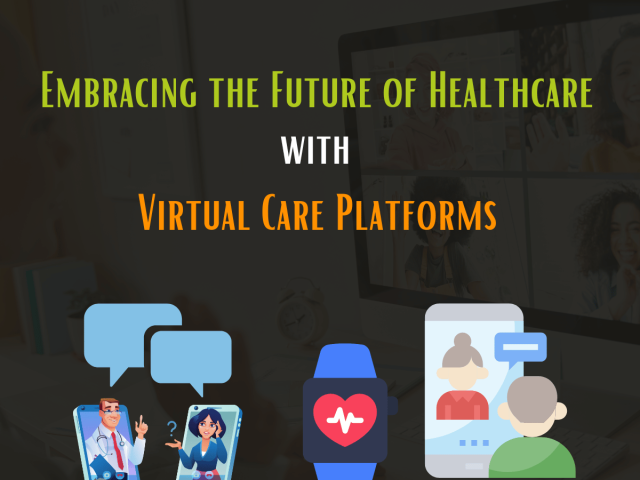The emergence of Generative Artificial Intelligence (Gen AI) in the software development domain has sparked both fervent excitement and cautious trepidation. While the prospect of rapid code generation and automated tasks holds undeniable allure, a fundamental question emerges: amidst this technological wave, what enduring principles continue to serve as the bedrock of successful software creation, immune to the erosion of even the most potent AI? What GenAI can’t change in Software Development?
This exploration unveils a reassuring reality: at the heart of software development, there exist three enduring pillars that withstand the challenges posed by technological changes. Crafted through accumulated experience and honed by successive generations of developers, these pillars not only navigate us through the Gen AI revolution but also serve as the solid groundwork upon which it is built.
Let’s embark on a voyage of exploration, diving into the fundamental principles and unraveling the hidden knowledge they possess.
Three Timeless Pillars of Software Development
1. Requirements Definition Remains Key
The emergence of Generative Artificial Intelligence (Gen AI) in software development has ignited excitement and anticipation. While visions of AI-powered code generation promise unprecedented speed, the bedrock of successful software remains steadfast: unambiguous and comprehensive requirements.
In the age of Gen AI, this truth takes on even greater significance. Ill-defined requirements will yield, at best, functional but unsatisfactory outcomes. At worst, they’ll derail projects, wasting time and resources. Think of Gen AI as a powerful engine; without clear direction, it’s lost at sea.
Crafting the compass for this technological voyage requires rigorous clarity, completeness, and feasibility. Prioritize critical features and involve stakeholders to ensure a shared vision. Tools like user stories use cases, and prototypes further enhance precision.
Let’s take an example of the Mars Rover Software
NASA’s Mars Rover missions exemplify the enduring importance of clear requirements. The software directing these rovers through the Martian landscape relies on meticulously defined specifications. The intricate interplay of hardware and software demands precision to ensure successful navigation, sample collection, and data transmission. Despite the advanced technology involved, the clarity of requirements remains paramount in avoiding mission failure and optimizing scientific outcomes.
Formal requirement specifications may be necessary for complex projects. Remember, precise requirements are not just about harnessing AI; they are the lifeblood of any successful software endeavor. Invest in this crucial stage, and your project, empowered by AI, will arrive at a masterpiece of functionality and user satisfaction.
Even in the Gen AI era, the timeless pillar of clear requirements remains unshakeable. So, before succumbing to the allure of automated code, remember: a well-defined requirement is worth its weight in gold, guiding your project towards success in any technological landscape.
2. Collaboration in Software Development
While Generative AI (Gen AI) promises an automated symphony of code, the enduring conductor of software development remains human collaboration. No virtuoso algorithm can replicate the vital interplay of communication, diverse perspectives, and empathetic understanding that orchestrates successful projects.
Agile methodologies and dedicated tools facilitate seamless knowledge sharing and idea flow. Diverse teams inject innovation and ensure solutions resonate with a wider audience. Collaborative sessions and user testing cultivate empathy, leading to software that truly connects. Effective leadership ensures tasks are aligned, progress monitored, and challenges tackled as a united front.
Let’s understand the significance of collaboration at each phase of the software development lifecycle.
- Team Formation: Ensuring a collaborative team formation is crucial to bring together diverse skills and perspectives. Collaboration at this stage ensures that various viewpoints are considered from the outset, fostering a holistic approach to problem-solving and idea generation.
- Initial Collaboration: During the initial stages, collaboration is vital for sharing insights and aligning the team’s understanding of the project goals. Brainstorming sessions and user story development involve collective input, laying the foundation for a shared vision among team members.
- Design Collaboration: Design collaboration ensures that the app features are not only technically feasible but also user-friendly. Collaboration between designers and developers facilitates the creation of wireframes and prototypes that seamlessly integrate functionality and aesthetics, enhancing the overall user experience.
- Development Phase: Agile sprints, daily stand-up meetings, and code reviews promote continuous collaboration. Developers work closely, sharing progress, discussing challenges, and collectively ensuring that the real-time chat feature is developed efficiently and meets quality standards.
- Testing and Quality Assurance: Collaborative testing involves the entire team, including developers, testers, and designers. This collaborative effort helps identify and address issues promptly, ensuring that the real-time chat feature meets both functional and design requirements.
- Feedback and Iteration: Establishing a feedback loop and conducting retrospectives are collaborative activities that involve the entire team. Collaboration in this phase ensures that the team learns from each iteration, continuously improves processes, and incorporates valuable insights from team members and stakeholders.
- Deployment and Post-Launch: Collaborative monitoring and support post-launch involve the entire team. Quick response to any issues and ongoing support require collaboration to maintain the feature’s reliability. Continuous collaboration with users post-launch ensures that the platform adapts to evolving needs and provides a positive user experience.
Example: Open-source projects like Linux Kernel Development
The collaborative nature of open-source projects, such as the development of the Linux kernel, underscores the indispensable role of human collaboration. Thousands of developers worldwide contribute to the Linux kernel, showcasing the power of diverse perspectives and collective problem-solving. While automated tools aid in code review and integration, the essence of collaboration extends beyond lines of code. It involves shared visions, community discussions, and the orchestration of a harmonious blend of talents to create a robust and reliable operating system.
Remember, Gen AI augments, not replaces. The software symphony thrives on the unique human strengths that AI cannot replicate. By promoting a culture of open communication, diverse perspectives, and empathetic understanding, we ensure that the human conductor continues to lead the technological orchestra, long after the Gen AI fanfare fades.
Gen AI enhances our work but doesn’t replace the human touch that’s key in software development.
3. Outcome-Driven Delivery and Agile Methodology
Generative AI promises to propel software development into uncharted waters, but two timeless guideposts remain crucial: outcome-driven delivery and agile methodology. These principles ensure our voyage delivers value, not just lines of code, navigating the turbulent seas of change even as AI reshapes the landscape.
Outcome-Driven Delivery: The Fixed Star
Software isn’t just functionality; it’s a tool built to achieve specific goals. Outcome-driven delivery keeps these goals front and center, recalibrating our course to reach the desired destination. Gen AI can be a powerful engine, but without a clear destination, even the fastest journey is meaningless.
Agile Methodology: The Adaptable Compass
Rapid change demands frequent course corrections. Agile methodologies provide the compass for these adjustments. Through iterative cycles of development and feedback, we adapt to user needs, embrace failures as learning opportunities, and refine our approach until the desired outcome is achieved. Gen AI can accelerate these cycles, but the human hand remains firmly on the tiller, steering towards successful outcomes.
Let’s understand this with an e-Commerce Platform Feature Rollout
Imagine a new e-commerce platform aiming to optimize user engagement and sales. The outcome-driven delivery would prioritize features that enhance the shopping experience and boost conversion rates. An agile methodology would involve iterative development cycles, frequent releases, and rapid adjustments based on user feedback. For instance, the platform might roll out a feature allowing users to virtually “try on” clothing items using augmented reality. Through constant iterations and close attention to user interactions, the platform can refine the feature, ensuring it aligns with customer expectations and contributes to increased sales. This exemplifies how outcome-driven delivery and agile methodologies can be applied beyond the realm of music streaming, demonstrating their versatility in achieving user-centric goals.
Remember, technology serves, not dictates. Outcome-driven delivery and agile methodology are not mere buzzwords; they are proven strategies for navigating the ever-changing software landscape. By focusing on user needs, embracing rapid iteration, and learning from challenges, we ensure our software delivers real value, regardless of the technological currents swirling around us.
Conclusion
The enduring pillars of Clear Requirements, Collaboration, and Outcome-Driven Delivery with Agile Methodology continue to steer our journey with unwavering certainty. At AnAr Solutions, we emphasize these timeless principles over the allure of Gen AI. We believe that successful software creation is not just about cutting-edge technology; it’s about clear direction, collaborative innovation, and delivering outcomes that resonate with users. As your partners in software excellence, we navigate the seas of innovation with purpose. Our commitment to prioritizing human-centric principles ensures that the solutions we craft are not only technically robust but also stand the test of time.






